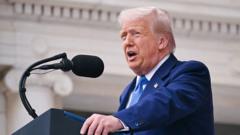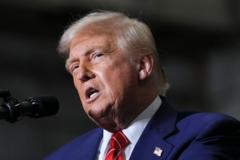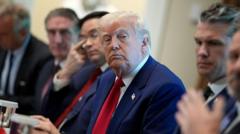China's approach to the fentanyl crisis has served as leverage in its trade negotiations with the United States. This strategic use of fentanyl-related cooperation dates back to Donald Trump's presidency and raises questions about the implications for current trade relations as tensions remain high.
China's Fentanyl Strategy in U.S. Trade Relations: Historical Context and Current Implications

China's Fentanyl Strategy in U.S. Trade Relations: Historical Context and Current Implications
The ongoing U.S.-China trade war sees fentanyl and its precursor chemicals emerge as pivotal bargaining chips in negotiations, with historical ties to previous administrations.
As the trade conflict between the United States and China escalates, the issue of fentanyl emerges as a potentially critical factor in negotiations. Historically, Chinese officials have leveraged their willingness to control fentanyl flows as a bargaining tool in the realm of U.S.-China relations. This dynamic has roots in previous administrations, particularly under President Donald Trump, who initially received concessions from Beijing after accusing them of failing to mitigate the opioid crisis in America.
In 2019, amid a tense trade standoff, China announced a ban on all forms of fentanyl, a direct response to rising concerns from the U.S. administration about the drug's impact. The enforcement of this ban was positioned as a humanitarian effort, earning praise from Trump, who viewed it as a means to strengthen ties between the two nations. The Chinese government had also committed to improved law enforcement cooperation with the U.S. to crack down on the drug's production and trafficking.
Despite these past agreements, the Biden administration is facing intensified pressure to demand more robust actions from China related to fentanyl. Recent policy changes, including the imposition of additional tariffs on Chinese goods, were influenced by the ongoing concern over fentanyl and its precursors, which continue to be a significant contributor to the opioid epidemic in America. The 10 percent tariffs were introduced under the premise of punishing China for inadequacies in controlling fentanyl, amplifying tensions between the two nations.
The complexities of the fentanyl issue go beyond mere trade discussions; they touch upon the broader implications of public health and international relations. While China has expressed its intent to "fight to the end" regarding what it perceives as U.S. aggression in trade, the U.S. maintains a position of requiring China's cooperation on fentanyl exports as part of any significant trade dialogue.
As negotiations continue, the interplay of fentanyl-related policies and trade tariffs may define the future of U.S.-China relations, highlighting the challenges of balancing economic interests with pressing societal issues like the opioid crisis. The outcome of these discussions will likely influence not only bilateral agreements but also broader global initiatives aimed at combatting drug trafficking.




















